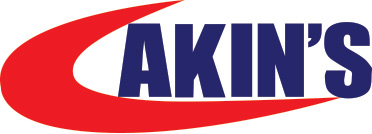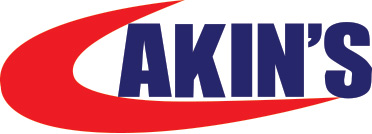
Scfr Ksa
Add a review FollowOverview
-
Founded Date October 18, 1953
-
Sectors Healthcare
-
Posted Jobs 0
-
Viewed 39
Company Description
Crafting an Effective Recruitment Strategy & Processes
Thom. Our AI Coach
– Thomas Assess – Hiring Accuracy
– Improve Onboarding
– Boost Internal Talent Mobility
– Stronger Leadership Teams
– Unlock Employee Success

– Thomas Connect – Enhance Collaboration
– Enhance Team Trust
– Strong Manager Employee Relationships
– Unlock Team Potential
– Employee Engagement
– Hybrid Working
– Employee Wellbeing
– Managing Conflict
– All Resources – Blogs
– Guides
– Whitepapers
– News
– All Resources – Webinars
– Industry Pages
– Case Studies
– Community
– Company – About Us
– Careers
– Diversity & Inclusion at Thomas
– Global Offices
– Team Interaction Optimization
– Customer Stories
– Science Advisory & Innovation Board
– Become a Partner
– Additional Services – Professional Services
– Integrations
– Training
– Digital Badging
– Contact us
– Login
Crafting an Efficient Recruitment Strategy & Processes
Modern recruiting is a competitive company but an effective recruitment method will identify the talent that’s right for employment the role, that suits the company’s culture, and will remain.
High personnel turnover and staff member engagement are huge concerns for HR teams in this competitive landscape too. We’re seeing a genuine focus on getting things right at the recruitment stage to prevent the costly side effects of ill-matched hires.
This guide details how to form a reliable recruitment method, including information on HR tools to support the hiring procedure, how to measure development, and specialist advice on avoiding pricey hiring mistakes.
What is a recruitment strategy?
A recruitment strategy is a formal strategy that sets out how a service will attract, work with, and onboard skill.
A recruitment technique ought to include headcount planning, employee value proposition, recruitment marketing strategies, choice criteria, tools and technologies, and succession plans. This ought to all be covered by the recruitment budget.
Don’t forget to think about diversity and inclusivity when developing talent acquisition strategies – leading talent could be lost if this is ignored.
What does a recruitment technique look like?
A recruitment strategy involves numerous strategic techniques working in tandem to guarantee the very best talent is discovered and worked with. These consist of:
Internal recruitment
Internal recruitment can be a substantial convenience as there isn’t a protracted duration of interviews or onboarding. However, it can cause a lack of varied ideas and development.
External recruitment
The most common method for discovering brand-new staff, external recruitment brings originalities, fresh techniques and renewed energy. However, it can take a long period of time and be costly to discover the right prospect as external recruitment needs comprehensive screening processes and complete onboarding.
Developing the employer brand
Our employer brand needs to resonate with candidates – they require to feel lined up with the organization’s perceived image and see themselves in it. Show potential employees the worths and the culture of the organization and how staff feel about working there to establish your company brand name and attract the very best prospects.
Direct marketing
Direct advertising in papers, trade magazines, trade journals and notification boards is an excellent method to target active job applicants, however this approach will not discover passive prospects who aren’t searching for a brand-new role.
Social media
Social network has turned into one of the most important recruitment techniques for organizations. Using the best platforms is crucial, along with having the best material. But recruiters need to constantly keep in mind that social media can be a hotbed for chatter and sharing unfavorable experiences so the need for excellent prospect experiences is essential.
Recruitment firms
It’s typical to contract out recruitment requirements to recruitment companies. Despite the fact that it might cost more to have them manage the entire procedure, they are well-connected professionals who are proficient at discovering skill with the best skill set. They can be particularly valuable when browsing for specific niche functions.
Job boards
Monster, Reed and Indeed are three of the most popular online job boards – they cover almost every category of job publishing and market. There are likewise specific industry-led task boards like TestGorilla that target a specific niche like medical representatives.
Job boards are simple to utilize and make functions visible for prospects.
Employee referrals
This significantly popular recruitment method is a combination of external and internal recruitment. In other words – existing staff refer people they know for vacancies. This approach is really economical and staff are most likely to refer individuals they trust and will show well upon them, leading to a stronger prospect swimming pool.
Internships and apprenticeships
Internship and apprenticeship programs are fertile ground for identifying and nurturing the future leaders of a company. These staff members can be moulded to the organization’s culture and they’ll grow to comprehend the systems in location from the ground up which is extremely important as they advance.
Why might a company need to transform its recruitment technique?
Modern recruitment is hyper-competitive. Attracting leading skill to an organization and satisfying their needs grows more complex every day, as does convincing them to remain.
Why? Because the goalposts are always moving. Emerging innovations, different selection procedures and employment shifting expectations are all rewriting the rulebook for what a recruitment technique need to look like, along with how we encourage and deal with staff members.
We have actually recognized six recruitment trends that have a significant effect on what our recruitment strategy, recruitment processes and recruitment marketing need to appear like.
1. Candidate desires
A global scarcity of skill means candidates can dictate the type of career they have quicker. Their preferences tend to be more diverse and transient than those of the generations before.
Instead of stay with a single organization for several years, today’s workers spend time constructing a of experience, resulting in more career changes over a much shorter duration.
This makes them more appealing to prospective employers as candidates with experience across multiple markets who are willing to work cross-sector can be more versatile and self-motivated, but it likewise implies employers need to continuously focus on worker retention.
2. Social network
Technological change has actually made both companies and prospective hires more available to each other. Active networking and social media suggests details is more easily available, impacting the methods we hire and the ways we promote our offices.
For recruitment companies and departments, the pressure is on to use information to establish more targeted and insightful recruitment strategies. Using social networks as a window into your culture can be an essential action in bring in like-minded people to your brand name.
3. Candidate attraction
The candidate experience from starting to end need to be a luring one, especially when possible hires will be receiving multiple offers and comparing the culture and worths of each business to their own. To form a successful relationship with and bring in leading prospects there must be a clear understanding of each celebration’s vision, worths, identity, and objectives.
4. The psychological agreement
A term utilized to explain whatever not covered by an official work contract, the mental contract represents the unwritten relationship between a company and its employees. This includes things like informal arrangements, mutual beliefs, and unspoken expectations.
The consistency of an office depends upon all parties honoring this contract. To prosper here we need to manage expectations – companies need to explain to new employees what they can anticipate from the job and staff members must be open about their abilities and limits.
5. Diversity & equality
Workforce demographics are moving. Greater life expectancy and changes to pensions are causing many to work for longer; more women are going into the workforce, generating equal pay and child care arrangement schemes; and new generations are going into the office with fresh concepts.
Employers must stay up to date with these modifications and listen to the needs of their varied labor force to guarantee office consistency.
6. Millennials & Gen Z
By 2025, millennials will represent 39% of the workforce and their younger cohort, Gen Z, will make up 23%. Their goals, work mindsets and technological frame of mind will define the culture of the 21st-century office.
These generations have an affinity with the digital world. Having grown up with Wi-Fi, smart devices, tablets and social networks, their expectations of recruitment techniques will be more digitally likely than any previous generation.
They also have expectations of fast profession development, varied and fascinating duties and continuous feedback. Their desire to keep moving through an organization indicate talent advancement strategies are vital for keeping the very best skill.
What is a recruitment procedure?
Recruitment process and recruitment strategy are two different things, as is recruitment preparation. Recruitment procedure refers to all the actions involved in hiring, from job description composing and prospect profiling to applicant screening, face-to-face interviews, evaluations, and background checks. It might take anything from a number of weeks to numerous months.
Recruitment procedures vary between businesses depending upon company structure and size, industry, and the role that is being filled. Junior roles frequently include a less extensive operation than that for senior and leadership positions, such as C-suite executives.
What are the benefits of a recruitment procedure?
Having a recruitment procedure develops an uniform approach to filling positions within a company, producing equality and performance. Key advantages include:
Improved efficiency
A reliable recruitment procedure need to cause the hiring of high possible staff members who can create healthy competition within groups to mark out complacency.
Cost-saving
An internal recruitment process can save on hefty recruitment costs and motivate staff engagement.
Quicker position filling
Having a procedure in location makes the look for feasible candidates more effective, which makes organizations more appealing to possible prospects. This minimizes the time invested internally and decreases expenses related to recruitment.
Clear outcomes
By not over-selling a job position or the company, you can minimize attrition and enhance productivity for the company.
How to develop a reliable recruitment process

There are a number of ways to establish an effective recruitment procedure. There are variations depending on sector, business size and position, but applying the crucial actions regularly will offer greater effectiveness.
It’s also essential to bear in mind the procedure doesn’t end with the prospect signing their agreement – it ends when they have actually effectively been onboarded into the business. This is when recruitment metrics can be used to comprehend how well the recruitment method and procedure worked.
Applying finest practice for an effective recruitment strategy
With the expense of ‘mis-hires’ for organizations totalling between 4 and 15 times the annual salary for the function, HR experts are under increasing pressure to implement best-in-class talent acquisition strategies to ensure they discover the ideal candidates for employment their organization.
If, like 70% of organisations surveyed by the CIPD, jobs are showing tough to fill, there are a number of concerns worth asking:
When was the last time the recruitment process was examined?
Is there a strategy to retain the best skill?
That 2nd concern is vital as 34% of organisations report trouble in maintaining staff past the 12-month mark.
At Thomas, we have actually recognized the following five stages for best-practice recruitment to assist companies employ the ideal person, the very first time, whenever:
1. Clearly define the uninhabited role
Getting this very first stage of the procedure right is essential. Clearly defining the vacant role will lead to preferable applicants, more unbiased decision-making and longer-term hires.
Identify the needs of business before preparing a task description to guarantee it’s well-defined and clear. Well-written job descriptions efficiently lay out the expectations of a role, giving clear specifications to prospective prospects.
2. Attracting candidates to your brand name
Increasingly crucial in such a competitive market, showcasing your company brand name through various employers, online platforms and interaction approaches can be a crucial step in drawing in the best prospects.
3. Advertising the function
Choose the best platforms to market the role you require to fill, whether that be the company’s own platform and social media, job boards, recruitment company or a mix.
Here are a few marketing tips to help promote functions on various platforms:
Online platforms
Understanding how technology affects your recruitment strategy is vital. Applicant Tracking Systems (ATS) streamline recruitment admin and guarantee a fast and efficient digital hiring procedure with better sourcing and prospect selection from one centralized hub. Unsurprisingly, 94% of employers and employing specialists state their ATS or recruiting software application has favorably impacted their hiring procedure.
Despite the favorable effect an ATS can have, it’s crucial to guarantee that it doesn’t impact the candidate experience negatively – a report by CareerBuilder found that 60% of candidates stopped an online application due to the fact that it was too intricate.
Communication approaches
Communication throughout the recruitment journey is helpful for both candidates and employing supervisors. Open and transparent communication is important to guarantee all parties are clear about where they remain in the process and what’s next.
A simple e-mail to let candidates understand if they have progressed to the next stage or not is a standard courtesy and increases brand name track record with candidates. Where possible, utilize technology to assist with the automation of communication.
Communication between essential staff associated with the recruitment process is likewise important to ensure there are no misunderstandings about internal expectations.
Employer brand
Brand reputation can be the difference in between drawing in the leading skill and viewing that skill go to a rival.
Platforms like Glassdoor offer an effective opportunity to promote your business to prospects who are examining potential employers and promote to perfect candidates who may not be aware of your organisation.
When combined with a concentrated and interesting social networks technique, your brand name can reach a huge online network of prospective prospects.
End-to-end combination
Using innovation can (and should) spread out much even more than just recruitment. In order to really reinvent your strategy, innovation must cover the whole staff member lifecycle.
In addition to Applicant Tracking Systems, set-up Talent Management Systems, Learning Management Systems and Human Resource Management Systems. These guarantee that, when on board, staff members continue to take pleasure in a seamless experience.
If different systems are utilized for each of these, recruitment and employee information is going to end up kept in various places, putting a pressure on the HR department. As such, end-to-end system combination or a centralized data repository is important.
Predictive analytics

With our information all in one location, we can benefit from predictive analysis to evaluate trends, identify behaviors and aptitude, forecast future performance, and develop standards for success. This enables us to develop succession strategies, recruit the right individuals, and make more educated choices.
4. Assessment and selection
Be sure to observe proficiencies and qualities apparent in staff members more than when to verify that they are reliable characteristics. Psychometric assessments help with this and offer you with a more rounded, unbiased view.

How do psychometric tests work for recruitment?
An efficient and well-planned recruitment method will use science-based psychometric assessments to assist understand the qualities, abilities and characteristic that best fit a specific function and determine those qualities within possible hires.
These HR tools assist employers find the most appropriate candidates, conserving time and cash and increasing the possibility of getting the ideal individual in the best job whilst also improving the organization’s total efficiency and decreasing staff member turnover.
There are a number of psychometric tests that are extremely reliable for candidate evaluation:
Behavioral assessments detail candidates’ communication designs, capability to communicate with others, and any stress triggers that figure out how they’ll behave as part of a team.
Personality evaluations clarify what new hires would add to your employee culture and, significantly, who may not be a great fit. This can be especially crucial when working with for management-level positions.
Emotional intelligence evaluations show how individuals are most likely to carry out in complex business environments – for example when dealing with potentially tough scenarios, when charged with high-impact decision-making or when managing various characters.
General intelligence assessments can predict the amount of time it will take individuals to get accustomed so employers can avoid bringing in new workers who may end up leaving due to aggravation.
5. Appoint the best individual quickly
Once the best prospect is recognized, make an offer as soon as possible. MRI Network found that 47% of decreased deals was because of prospects receiving alternative job deals while waiting to hear back.

6. Induction into the function, group and culture
A comprehensive induction into the role, group and company culture will permit any new hires to settle into the organization. These introductions can be customized to the individual utilizing the details gathered during the recruitment process.
A full induction ought to consist of:
Offer approval
Provide all the details candidates require to make a notified decision when offering them an offer – this may include negotiating before acceptance of the deal. The offer should plainly lay out what is anticipated of their function.
Induction to the service
Once your prospect has accepted the deal, showcase the business culture and strengthen the company vision. When they begin, make certain they have everything they need to get going from access to the workplaces to passwords and devices. Provide the warm welcome they deserve.
Training
Ensure prospects receive the support they need for training and development. Mentor or pairing systems can be helpful for upskilling and teaching new staff the ropes. This is a healthy method to support their progress and incorporate them with other employee.
Checking-in
Over the very first few months of employment, continue to check in with brand-new recruits to guarantee they are settling in and delighted. Icebreakers with the team are a great method to assist new starters settle in and learn more about their peers. Encourage them to talk with managers or ask concerns, making certain they feel comfy within business.
How to determine recruitment success
Recruiting metrics are measurements used to track working with success and optimize the procedure of working with prospects for a company. When utilized correctly, these metrics assist to assess the recruiting process and whether the company is employing the best people.
Why are recruitment metrics crucial?
Recruitment metrics assist us see the ROI of hiring somebody and whether a hire was right for the role. They can likewise highlight any problems in the recruitment process that need to be changed.
What measurements should be utilized?
Quantitative steps that suggest ROI and can help with future selection processes when employing brand-new personnel are the most efficient recruitment metrics. These consist of:
Time to work with – how long does it take to fill a position? This includes developing a job description through to onboarding.
Quality of hire – how suited are they to the position that they are employed for – the number of are passing probation? The number of are promoted and within what quantity of time? What worth are they contributing to the position, group and company? Is their output enough or better than anticipated?
Cost per hire – How much is it costing to hire and onboard new hires? For how long till they are performing at the exact same or better level than their predecessor?
Retention rate – the length of time are brand-new hires remaining within the company? How long are they remaining in their function? Exists a high personnel turnover rate? Are there commonness among those who leave quicker than expected?
What to do if something isn’t working as efficiently as it should be?
If something about our recruitment method isn’t working, we require to examine our metrics and recognize the problem.
Then, we can examine and improve the processes. There are a variety of typical problems we see when it comes to recruitment:
Excessive sound in the market – ensure you have a strong brand and a clear task description to attract the best candidates.
Stages are too long – if candidates are accepting other deals before we can get there, the recruitment procedure might be taking too long. Decrease the time in between each phase where possible and assess interaction.
Too selective – searching for a unicorn instead of examining the prospects on their benefits and discovering the most suitable? Review where gaps in understanding can be rectified, and accept that a 100% perfect candidate might not exist.
In summary
Modern recruiting isn’t for the faint-hearted but putting in the time to establish a recruitment method and take a proactive approach to recognize, bring in and keep the best people helps organizations get a genuine benefit over their competitors.
When taking a look at our skill acquisition methods, we should not neglect the recruitment procedure. There are many methods to boost this procedure using recruitment trends and sophisticated HR tools such as psychometric testing to better examine candidate abilities.

